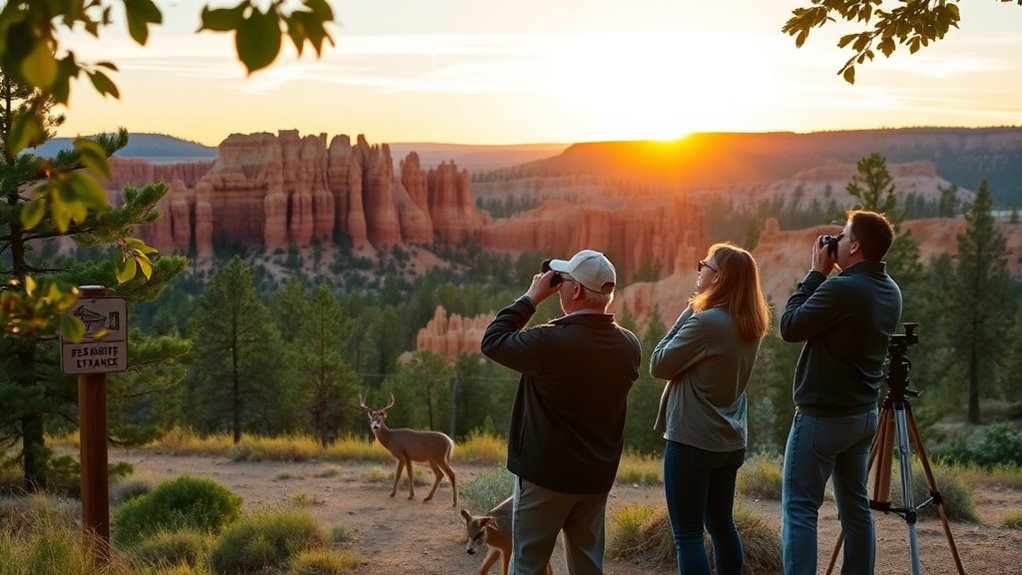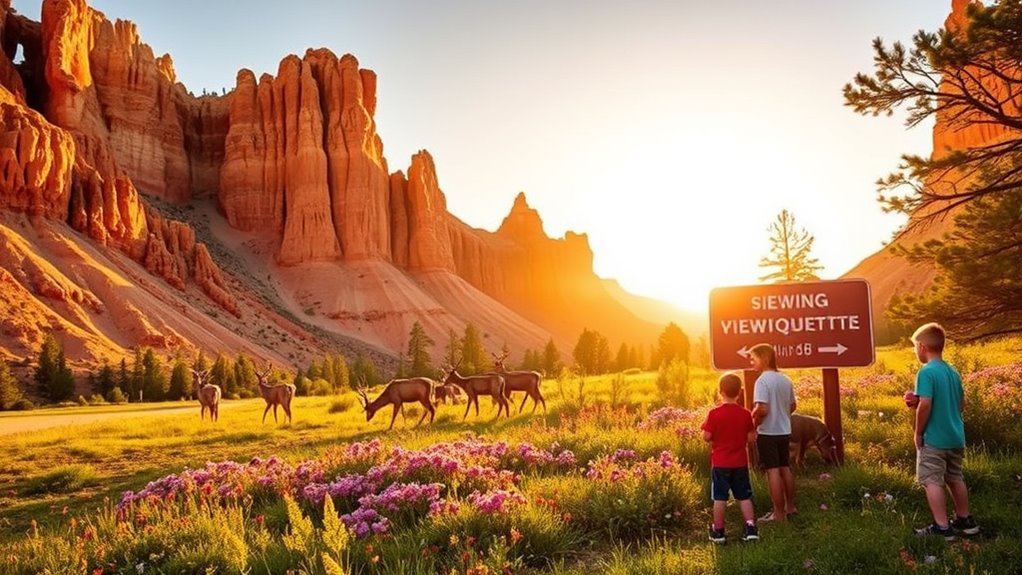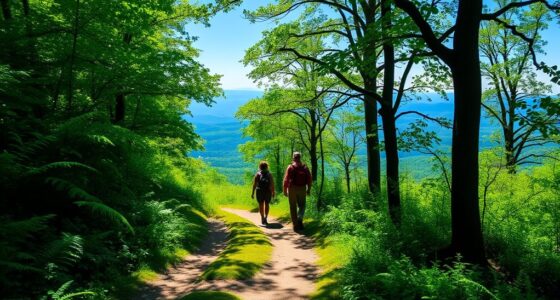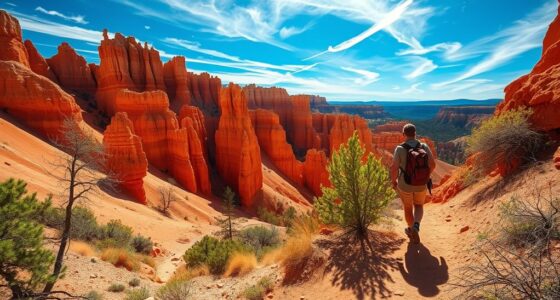When observing wildlife in Bryce Canyon National Park, keep a respectful distance from the animals to protect their habitats. Use binoculars or zoom lenses for a closer look, and remain quiet to avoid disturbing them. Never feed wildlife, as it disrupts their natural behaviors and can lead to dangerous encounters. By adhering to these guidelines, you’ll help preserve the park’s ecosystem. There’s more to discover about how to enhance your wildlife viewing experiences here.
Key Takeaways
- Always maintain a respectful distance from wildlife and use binoculars for better views without disturbing them.
- Never feed animals, as it disrupts their natural foraging and can lead to dangerous encounters.
- Avoid approaching or chasing wildlife, as this can harm both the animals and their habitat.
- Educate yourself about local wildlife behaviors to foster appreciation and promote responsible viewing practices.
- Support conservation efforts by adhering to park guidelines and reminding others of proper wildlife etiquette.

When you explore Bryce Canyon National Park, you might find yourself captivated by its diverse wildlife. From the iconic mule deer to the playful rock squirrels, every creature adds to the park’s unique ecosystem. However, enjoying these animals comes with a responsibility. It’s essential to observe wildlife without causing them stress or altering their natural behaviors. This is where wildlife viewing etiquette plays a critical role.
One of the biggest mistakes visitors make is feeding animals. While it might seem harmless to toss a snack to a curious squirrel or deer, this practice can have dire consequences. Feeding animals disrupts their natural foraging habits, making them reliant on human food sources. This reliance can lead to malnutrition or even dangerous encounters with humans when they seek food. Animals that become accustomed to human interaction can also venture into areas where they shouldn’t, increasing the risk of accidents for both the animals and park visitors.
Additionally, feeding can invite habitat disturbance. When animals congregate in certain areas due to human-provided food, it can lead to overgrazing or trampling of vegetation. This disruption can have far-reaching effects on the ecosystem, affecting not only the animals that depend on these habitats but also the plants and other wildlife in the area. By maintaining a respectful distance and refraining from feeding them, you help preserve the delicate balance of the environment.
When you’re out exploring, keep your distance. Use binoculars or a camera with a zoom lens to enjoy close-up views without encroaching on their space. If you encounter wildlife on your path, stop and observe quietly. Remember, you’re a guest in their home, and they deserve the space to roam freely without feeling threatened.
Moreover, educate yourself about the local wildlife. Understanding their behaviors, habitats, and needs will enhance your experience and foster a deeper appreciation for these magnificent creatures. If you see someone feeding animals or engaging in disruptive behavior, consider gently reminding them of the park’s guidelines. It’s our collective responsibility to protect these animals and their habitats. Additionally, utilizing data analytics can support better decision-making in wildlife conservation efforts, ensuring a sustainable environment for future generations.
Frequently Asked Questions
What Types of Wildlife Can Be Seen in Bryce Canyon National Park?
In Bryce Canyon National Park, you can spot a variety of native species, including mule deer, bighorn sheep, and the elusive mountain lion. If you’re into bird watching, you’ll love the park’s diverse avian population, which features species like the peregrine falcon and the American robin. Keep your eyes peeled and your camera ready, as you never know when you’ll encounter these incredible animals in their natural habitat.
Are There Specific Seasons Best for Wildlife Viewing?
Yes, certain seasons are definitely better for wildlife viewing. Spring and fall are prime times to spot animals during their seasonal migration. In spring, you’ll see many species returning, while fall offers a chance to witness them preparing for winter. Breeding seasons in late spring also bring more activity, making it easier to observe behaviors. So, plan your visit around these times for the best wildlife experiences in the park!
Can I Bring My Pet While Viewing Wildlife?
No, you can’t bring your pet while viewing wildlife. Most parks have strict leash regulations and safety concerns, which can put both your pet and wildlife at risk. If you’re considering a trip, it’s best to leave your furry friend at home. This way, you can fully enjoy the experience and guarantee the safety of all creatures. Remember, observing wildlife from a distance is key to protecting their natural behavior.
What Should I Do if I Encounter a Wild Animal?
If you encounter a wild animal, keep a proper distance—at least 100 yards from large mammals like bears and bison. Did you know that maintaining this distance helps safeguard both your safety and the animal’s well-being? Stay calm, and practice silent observation; this way, you can enjoy the moment without startling the creature. Never approach or feed the animal, as this can disrupt its natural behavior and lead to dangerous situations.
Are There Guided Wildlife Viewing Tours Available in the Park?
Yes, there are guided tours available in the park that focus on wildlife viewing. These wildlife programs provide you with expert insights into the local fauna and their habitats. You’ll get the chance to learn about the best spots for sightings while enjoying the beauty of Bryce Canyon. Joining a guided tour enhances your experience, ensuring you see more wildlife while also learning the importance of preserving their natural environment.
Conclusion
When you’re out exploring Bryce Canyon, remember that “actions speak louder than words.” By respecting wildlife and their habitats, you’re not just ensuring a better experience for yourself but also for future visitors. Keep your distance, avoid feeding animals, and tread lightly on the trails. By following these simple etiquettes, you’ll help preserve the beauty of this stunning park and its inhabitants. So, let’s nurture nature together—every little effort counts!










